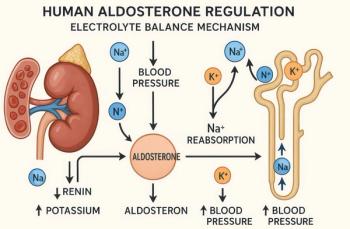
AHA's "Life's Simple 7" Reduces Heart Failure Risk
Study: "Ideal" adherence to healhty habits (eg, weight control, no smoking, average A1c) may reduce risk of heart failure by >50% vs "inadequate" adherence.
The incidence of congestive heart failure (HF) was reduced by 47% in a group of individuals adhering to a combination of healthy lifestyle practices; among individuals who adhered to an “ideal” combination of those practices, HF was reduced by 55%. In
The results were published in the July issue of the Journal of the American College of Cardiologists.
The remaining risk-reduction measures that make up the AHA LS7 are adequate physical activity, balanced nutritional/caloric intake, and lipids within normal range.
The 37,803 study participants were from the European Prospective Investigation into Cancer and Nutrition-Netherlands cohort (mean age 49.4 ± 11.9 years, 74.7% women). Each participant was assigned a LS7 score ranging from 0 to 14 that was calculated by assigning 0, 1, or 2 points for smoking, physical activity, body mass index (BMI), diet, blood pressure, total cholesterol, and blood glucose. The majority earned an inadequate score, approximately one-third had an intermediate score, and less than one-quarter earned an ideal score:
- Ideal 11-14 pts 23.2%
- Intermediate 9-10 pts 35.3%
- Inadequate 0-8 points 41.5%
During follow-up of a median of 15.2 years, HF was experienced by 690 participants (1.8%). In Cox proportional hazards models, ideal and intermediate LS7 scores were associated with reduced risk for HF compared with the inadequate category (hazard ratios: 0.45 [95% confidence interval (CI): 0.34 to 0.60] and 0.53 [95% CI: 0.44 to 0.64], respectively).
The authors conclude, "Preventive strategies that target combinations of specific LS7 components could have a significant impact on decreasing incident HF in the population at large."
In
Dr Thompson’s story hints at the “simple” in Life’s Simple 7, ie, many of our most burdensome health problems could be prevented through simple lifestyle modifications; it also speaks directly to the extraordinary annual US expenditures on chronic health conditions, ie, here, the bottom of our cliff.
Newsletter
Enhance your clinical practice with the Patient Care newsletter, offering the latest evidence-based guidelines, diagnostic insights, and treatment strategies for primary care physicians.
















































































































































































































































































